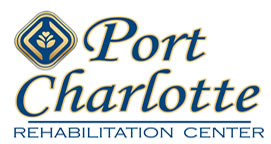Physical therapy is a cornerstone of modern healthcare, offering essential support for individuals recovering from injuries, surgeries, and managing chronic conditions. This comprehensive guide will delve into the benefits of physical therapy, the various techniques employed by therapists, and the expected outcomes for patients undergoing treatment.
Understanding Physical Therapy
Physical therapy, often referred to as PT, is a form of rehabilitative health that uses specially designed exercises and equipment to help patients regain or improve their physical abilities. It is provided by licensed physical therapists who are trained to assess and treat a range of conditions that limit the body’s ability to move and perform functional activities in daily life. More Here
The Benefits of Physical Therapy
Pain Management
Physical therapy is highly effective in managing pain. Techniques such as manual therapy, ultrasound, electrical stimulation, and exercises can help alleviate pain and restore muscle and joint function to reduce pain.
Avoiding Surgery
In many cases, physical therapy can help avoid the need for surgery. By eliminating pain or healing an injury, surgery may no longer be necessary. Even if surgery is required, pre-surgery physical therapy can lead to better outcomes and faster recovery.
Improving Mobility
Whether you’re recovering from surgery or suffering from a chronic condition, physical therapy can help improve your mobility. Exercises designed to increase strength, flexibility, and balance can help restore your ability to move around more easily.
Recovery from Stroke
After a stroke, it’s common to lose some degree of function and movement. Physical therapy helps strengthen weakened parts of the body and improve gait and balance, enhancing the patient’s ability to move and carry out daily activities.
Managing Chronic Conditions
Conditions such as diabetes, heart disease, and arthritis can benefit greatly from physical therapy. Therapists can create specific management plans to control symptoms and improve overall health.
Preventing Falls
Therapists can assess your risk for falls and provide exercises that mimic real-life situations to help with balance. Additionally, they can recommend exercises to improve coordination and provide assistive devices to ensure safe walking.
Techniques Used in Physical Therapy
Physical therapists employ a variety of techniques tailored to the specific needs of each patient. Here are some common methods used in physical therapy:
Manual Therapy
This hands-on technique involves manipulating, mobilizing, and massaging tissues to reduce pain and improve flexibility and movement. Techniques include joint manipulation, soft tissue mobilization, and myofascial release.
Exercise Therapy
Exercise is a fundamental component of physical therapy. Therapeutic exercises are designed to improve strength, flexibility, and endurance. These exercises may include stretching, strengthening exercises, and cardiovascular conditioning.
Electrotherapy
This involves using electrical energy to manage pain and stimulate muscles. Techniques such as Transcutaneous Electrical Nerve Stimulation (TENS) and Electrical Muscle Stimulation (EMS) are common forms of electrotherapy.
Ultrasound Therapy
Ultrasound uses sound waves to generate heat deep within tissues. This can help increase blood flow, reduce pain, and promote healing in injured areas.
Heat and Cold Therapy
Heat therapy can relax muscles and improve blood circulation, while cold therapy can reduce inflammation and numb pain. These methods are often used in combination to treat injuries.
Hydrotherapy
Also known as aquatic therapy, this involves performing exercises in water. The buoyancy of water supports the body and reduces stress on joints, making it an excellent environment for rehabilitation.
Kinesiology Taping
Kinesiology tape is applied to the skin to support muscles and joints without restricting movement. It can help reduce pain, improve circulation, and support injured muscles.
Laser Therapy
Low-level laser therapy (LLLT) uses light to reduce pain and inflammation and accelerate tissue repair. It’s often used for soft tissue injuries and joint disorders.
Expected Outcomes of Physical Therapy
The outcomes of physical therapy can vary greatly depending on the individual and the condition being treated. However, there are several common benefits that most patients experience:
Pain Reduction
One of the primary goals of physical therapy is to reduce pain. Through various techniques, physical therapists can help alleviate both acute and chronic pain, leading to improved quality of life.
Improved Mobility and Function
Physical therapy can significantly improve a patient’s ability to move and perform daily activities. Whether it’s walking, climbing stairs, or performing specific job-related tasks, PT can help patients regain their independence.
Enhanced Recovery from Surgery or Injury
Patients who undergo physical therapy after surgery or injury typically experience faster and more complete recoveries. PT helps restore strength, flexibility, and function, making it easier to return to normal activities.
Increased Strength and Endurance
Therapeutic exercises are designed to improve overall strength and endurance. This is particularly important for patients recovering from prolonged illnesses or injuries that have led to muscle atrophy and weakness.
Better Balance and Coordination
Physical therapy includes exercises that improve balance and coordination, reducing the risk of falls and injuries, especially in older adults.
Management of Chronic Conditions
For patients with chronic conditions such as arthritis or diabetes, physical therapy can help manage symptoms, improve overall health, and reduce the need for medication.
Improved Mental Health
Engaging in physical therapy can also have positive effects on mental health. Exercise and physical activity are known to reduce symptoms of depression and anxiety, and achieving physical therapy goals can boost self-esteem and confidence.
How to Maximize the Benefits of Physical Therapy
To get the most out of physical therapy, it’s important for patients to be actively involved in their treatment. Here are some tips to maximize the benefits:
Follow Your Therapist’s Instructions
It’s crucial to follow the guidance and recommendations provided by your physical therapist. This includes performing exercises as prescribed and attending all scheduled sessions.
Stay Consistent
Consistency is key to achieving the best outcomes. Regular attendance and adherence to your exercise program are essential for progress.
Communicate Openly
Keep an open line of communication with your physical therapist. Share any concerns, pain, or difficulties you experience during therapy. This helps the therapist adjust your treatment plan as needed.
Set Realistic Goals
Work with your therapist to set realistic and achievable goals. Celebrate small milestones along the way to stay motivated and encouraged.
Stay Active Outside of Therapy
Incorporate physical activity into your daily routine outside of therapy sessions. Activities like walking, swimming, or yoga can complement your therapy and improve overall health.
Conclusion
Physical therapy plays a vital role in the recovery and management of various health conditions. Its benefits extend beyond just physical improvements, positively impacting mental health and overall well-being. By understanding the techniques used and the expected outcomes, patients can better appreciate the value of physical therapy and actively participate in their rehabilitation journey. Next >>
Whether you’re recovering from surgery, managing a chronic condition, or seeking to improve your mobility and function, physical therapy offers a pathway to a healthier, more active life. Embrace the journey with your physical therapist, and take the necessary steps towards achieving your health and wellness goals.







